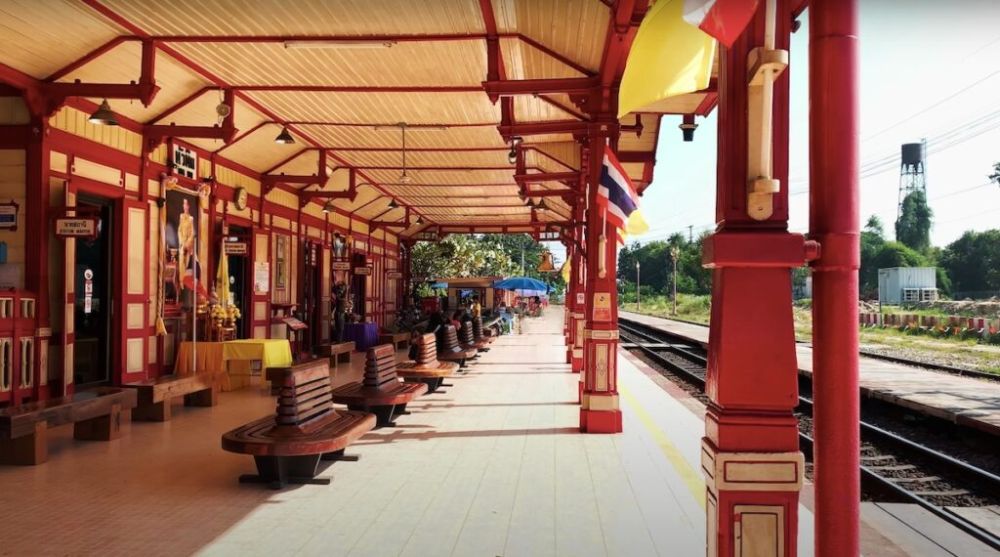

Located in the heart of the idyllic beach town of Hua Hin in Thailand, the Hua Hin Railway Station is not just a transportation hub, but a historical landmark steeped in the country's tourism narrative. Its establishment dates back to the early 20th century during the reign of King Rama VI, when the Southern Railway was constructed to connect Bangkok with Malaysia. The railway station's iconic status began to surge in the 1920s, coinciding with the development of Hua Hin itself as a beach resort getaway for Thai royalty and high society.
The unmistakable architectural charm of the Hua Hin Railway Station lies in its fusion of traditional Thai design and Victorian influence. The most notable structure is the Royal Waiting Room, which was originally constructed at Sanam Chan Palace in Nakhon Pathom and later transferred to Hua Hin to serve the royal family. This elegant pavilion symbolizes the town's historical connection to Thai aristocracy, effectively making it an early prototype for luxury tourism in Thailand.
The opening of the luxurious Railway Hotel (now known as the Centara Grand Beach Resort & Villas Hua Hin) in the 1920s further cemented Hua Hin’s position on the tourism map. It signaled the start of a burgeoning hospitality industry, which thrived parallel to the rise of train travel among both local and international tourists seeking the sophisticated yet serene atmosphere of Hua Hin.
In recent years, tourism trends in Hua Hin have evolved with global shifts. The town has expanded its reach beyond upscale travelers to welcome a diverse array of visitors seeking ecotourism, wellness retreats, and cultural experiences. Modern transport options, including a planned high-speed rail that will further reduce travel time from Bangkok, are set to sustain Hua Hin’s appeal as a tourism destination.
Despite these changes, the Hua Hin Railway Station remains a timeless attraction. Its picturesque setting continues to draw photographers, culture enthusiasts, and history buffs alike. The station operates as a living museum, preserving the legacy of when rail travel was a luxury and Hua Hin was a nascent jewel in Thailand's tourism crown.
Recognizing the unique historical value of the Hua Hin Railway Station, the Thai government and local community have made concerted efforts to preserve its structures. Sustainable tourism initiatives aim to safeguard the architectural integrity while promoting responsible travel practices that respect the town’s heritage and natural beauty. Visitors are encouraged to delve into the history, engage with local traditions, and support conservation efforts during their stay.
In conclusion, Hua Hin Railway Station is more than a stop on a journey; it is a destination steeped in history, offering a window into the origins of Thai tourism and an enduring symbol of Hua Hin's lasting charm.